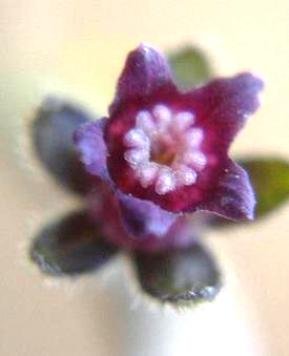Cynoglossum hispidum

Author: Ivan Lätti
Photographer: Judd Kirkel Welwitch
Cynoglossum hispidum, commonly known as hound's tongue or sometimes magenta hound's tongue and in Afrikaans as beestongblaar (cattle tongue leaf), is a biennial or perennial that grows from a rootstock, reaching heights from 30 cm to 60 cm.
The basal leaves are stalked, while the smaller ones up te stem are sessile. The leaf-shape is lanceolate to elliptic, covered in coarse, rough hairs, sparsely distributed. The generic name, Cynoglossum, is derived from the Greek words kuon meaning dog and glossa meaning tongue, referring to the leaf appearance resembling a dog's tongue.
The species distribution in South Africa is widespread, more to the east of the country but recorded in all provinces apart from (possibly) the Northern Cape.
The habitat is diverse, mainly grassland, woodland and marshes. The habitat population is deemed of least concern early in the twenty first century.
The red or orange fruit are eaten by birds and monkeys (Van Wyk and Malan, 1997; iNaturalist; https://pza.sanbi.org; http://redlist.sanbi.org).

